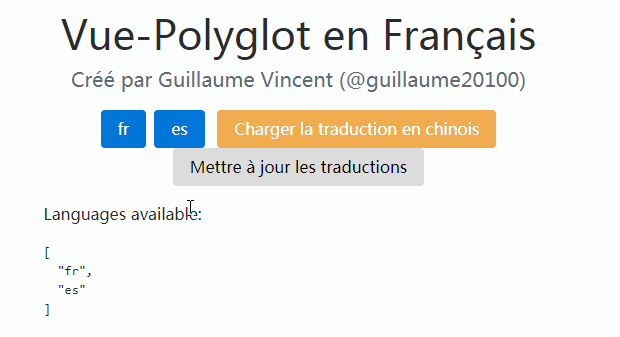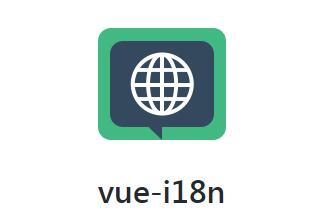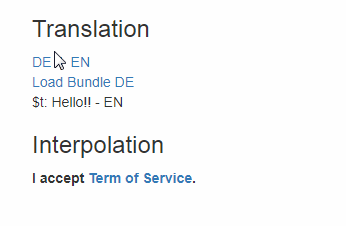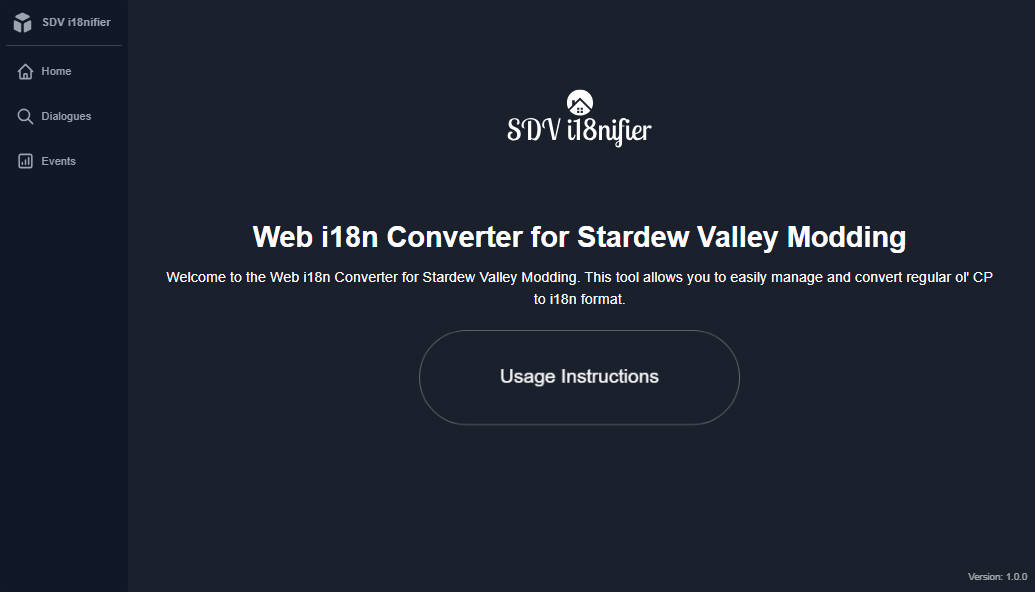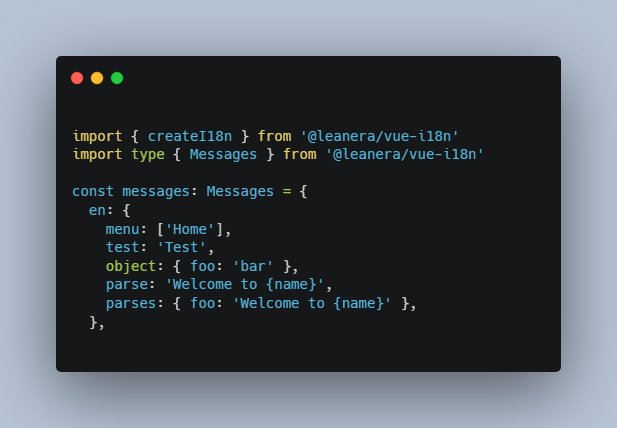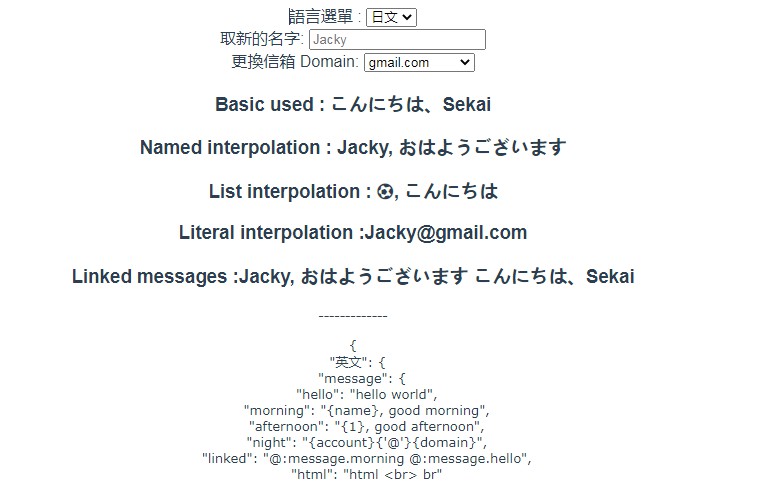Vue-Polyglot
basic translation plugin for VueJS 2+.
Installation
npm install --save vue-polyglot
TLDR
-
can load translation asynchronously with HTTP requests (use
axiosmodule) -
guess browser language and use it automatically
-
default message directly in your component
{{ $t('error_684', 'User already exists') }} -
load data in translation
this.$t('helloUser', 'hello {user}', {user: 'toto'})> hello toto
Disclaimer:
This is not a plugin to integrate AirBnb's Polyglot.js into Vue, but a different implementation of its own.
Example
<div id="app">
<h1>{{$t('title', 'Vue-Polyglot in English')}}</h1>
<p>{{ createdBy }}</p>
<p>
<button type="button"
v-for="lang in this.$polyglot.languagesAvailable"
v-on:click="showAppIn(lang)">
{{lang}}
</button>
</p>
</div>
import Polyglot from 'vue-polyglot';
Vue.use(window.Polyglot.default, {
defaultLanguage: 'en',
languagesAvailable: ['fr', 'es']
});
Vue.locales({
'fr': {
'title': 'Vue-Polyglot en Français',
'createdBy': 'Créé par {user}',
},
'es': {
'title': 'Vue-Polyglot en Español',
'createdBy': 'Creado por {user}',
}
});
new Vue({
el: '#app',
methods: {
showAppIn: function(lang) {
this.$polyglot.setLang({lang: lang});
}
},
computed: {
createdBy: function() {
return this.$t('createdBy', 'Created by {user}', {user: 'Guillaume Vincent (@guillaume20100)'});
}
}
});
API
Vue.use(Polyglot, {
defaultLanguage: 'en',
languagesAvailable: ['zh', 'fr']
});
Vue.locales({
'fr': {
'hello': 'bonjour',
'hiUser': 'bonjour {user}'
},
'zh': {
'hello': '你好',
'hiUser': '你好 {user}'
}
})
$t(key[, fallbackMessage][, data])
| browser locale | method | translated text |
|---|---|---|
en-US |
$t('hello') |
hello |
zh-CN |
$t('hello') |
你好 |
fr-FR |
$t('hello') |
bonjour |
en-US |
$t('hello', 'Hello !') |
Hello ! |
es-ES |
this.$t('hiUser', 'hi {user}', {user: 'Guillaume'}) |
hi Guillaume |
fr-FR |
this.$t('hiUser', 'hi {user}', {user: 'Guillaume'}) |
bonjour Guillaume |
Loading translations synchronously
Set locales with Vue.locales option in your app:
Vue.locales({
'fr': {
'hello world': 'bonjour monde'
},
'zh': {
'hello world': '你好,世界'
}
});
Loading translation file asynchronously
this.$polyglot.getLocale(options = {baseURL = 'i18n', lang = 'auto', ext = '.json'})
Vue.use(Polyglot, {
defaultLanguage: 'en',
languagesAvailable: ['zh', 'fr']
});
new Vue({
el: '#test',
beforeCreate() {
this.$polyglot.getLocale({baseURL: 'dist/i18n'});
},
methods: {
getTranslationAndShowAppInChinese() {
this.$polyglot.getLocale({lang: 'zh'});
}
}
})
It will load asynchronously translations using browser's language.
For example if browser language is fr-FR, languages available are ['zh', 'fr'], this.$polyglot.getLocale({baseURL: 'dist/i18n'}) will get translation from dist/i18n/fr.json file.
this.$polyglot.getLocale({lang: 'zh'}) will get translation from i18n/zh.json file.
Extend translations synchronously
Vue.locales replace all locales. If you want to update translations use extendLocales method instead:
this.$polyglot.extendLocales({
'fr': {
'title': 'Vue-Polyglot en Français (??️)'
},
'es': {
'title': 'Vue-Polyglot en Español (??️)',
},
'zh': {
'title': 'Vue-Polyglot在中国 (??️)',
}
});
Changing the language to use
Use the setLang method of the $polyglot property, like this:
Vue.component({
methods: {
showAppInChinese() {
this.$polyglot.setLang({lang: 'zh'});
}
}
});
